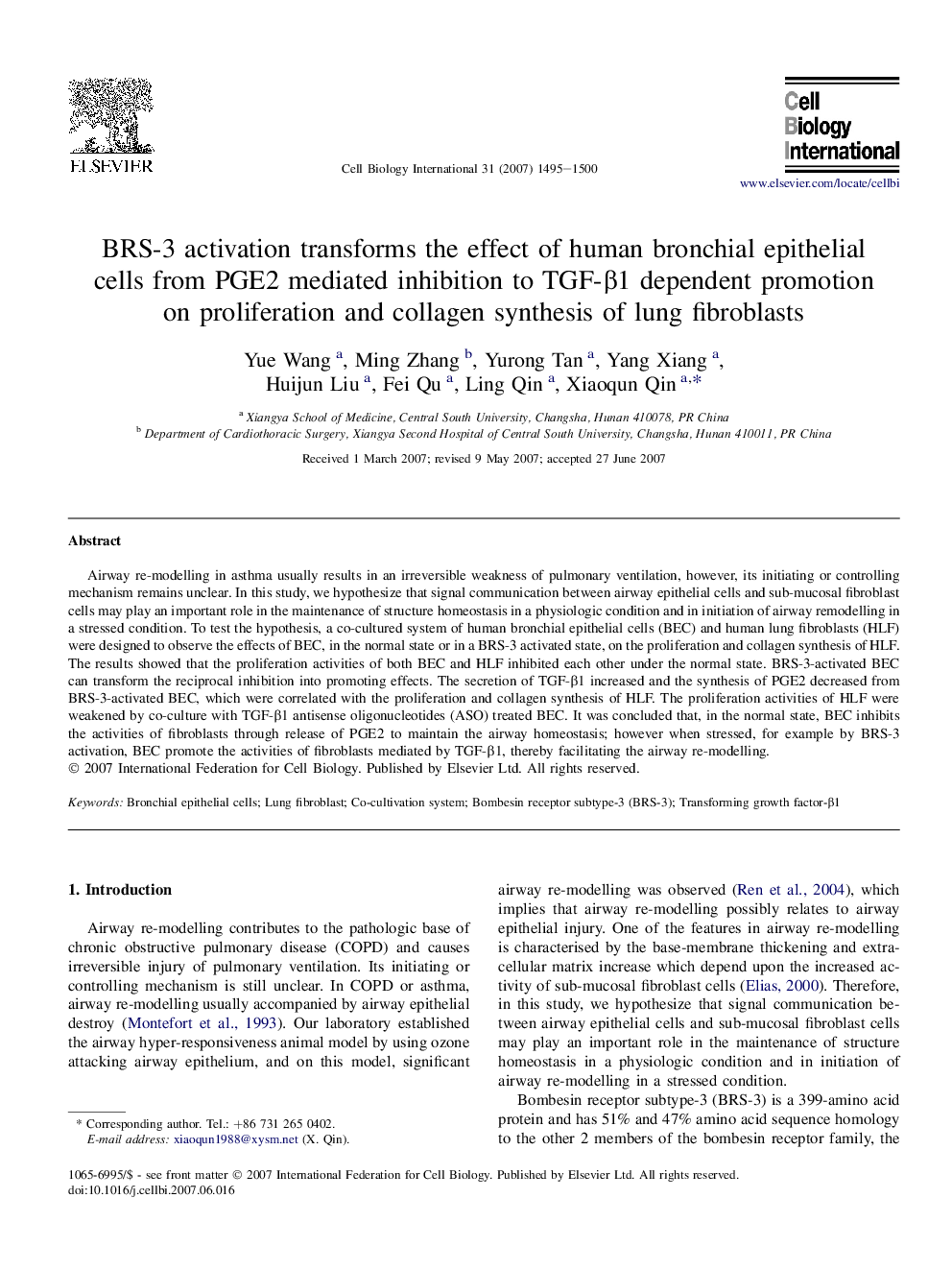| Article ID | Journal | Published Year | Pages | File Type |
|---|---|---|---|---|
| 2067576 | Cell Biology International | 2007 | 6 Pages |
Abstract
Airway re-modelling in asthma usually results in an irreversible weakness of pulmonary ventilation, however, its initiating or controlling mechanism remains unclear. In this study, we hypothesize that signal communication between airway epithelial cells and sub-mucosal fibroblast cells may play an important role in the maintenance of structure homeostasis in a physiologic condition and in initiation of airway remodelling in a stressed condition. To test the hypothesis, a co-cultured system of human bronchial epithelial cells (BEC) and human lung fibroblasts (HLF) were designed to observe the effects of BEC, in the normal state or in a BRS-3 activated state, on the proliferation and collagen synthesis of HLF. The results showed that the proliferation activities of both BEC and HLF inhibited each other under the normal state. BRS-3-activated BEC can transform the reciprocal inhibition into promoting effects. The secretion of TGF-β1 increased and the synthesis of PGE2 decreased from BRS-3-activated BEC, which were correlated with the proliferation and collagen synthesis of HLF. The proliferation activities of HLF were weakened by co-culture with TGF-β1 antisense oligonucleotides (ASO) treated BEC. It was concluded that, in the normal state, BEC inhibits the activities of fibroblasts through release of PGE2 to maintain the airway homeostasis; however when stressed, for example by BRS-3 activation, BEC promote the activities of fibroblasts mediated by TGF-β1, thereby facilitating the airway re-modelling.
Keywords
Related Topics
Life Sciences
Biochemistry, Genetics and Molecular Biology
Biophysics
Authors
Yue Wang, Ming Zhang, Yurong Tan, Yang Xiang, Huijun Liu, Fei Qu, Ling Qin, Xiaoqun Qin,
